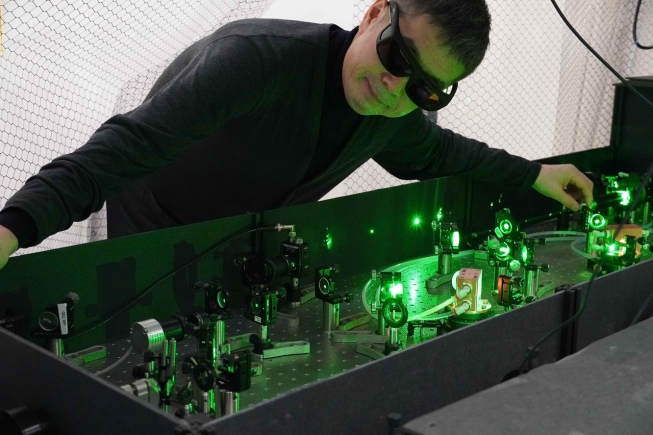
Researchers cool antimatter for the first time.
Researchers at the CERN-based ALPHA collaboration have cooled antimatter to near absolute zero for the first time, using a laser system developed by a team led by Dr. Takamasa Momose, a UBC professor in the Department of Chemistry and the Department of Physics and Astronomy. This achievement, published in and featured on the cover of the journal Nature, marks a groundbreaking advancement in the studies of antimatter.
Antimatter and matter have the same mass, but opposite charges. Antihydrogen, which was used in this study, is composed of one positron and one antiproton, the antiparticle counterparts of the electron and proton. When antimatter and matter interact, they annihilate, making antiatoms, such as antihydrogen, incredibly difficult for scientists to confine and study.
It is believed that matter and antimatter existed in equal parts after the Big Bang. However, the reason why most of the universe is composed of matter leaves a puzzling question.
In 2011, the CERN ALPHA collaboration confined antihydrogen and tracked it for one thousand seconds. This led to studies of the antihydrogen spectrum in 2012. In 2018, the collaboration was able to excite an important atomic transition of hydrogen, the Lyman-α transition, in antihydrogen, which paved the way for the laser cooling technique in this study.
The laser cooling method, previously only applied to study matter, was used to cool down antihydrogen particles down to near absolute zero. This method takes advantage of momentum conservation where the momentum of photons is transferred to antihydrogen upon contact to reduce the velocity of these particles, lowering their temperature. It was believed that the photon-antimatter momentum exchange would be the same as that for photon-matter, though prior to the results published in Nature, no experimental evidence had been obtained to confirm the photon-antimatter momentum exchange which is driven by laser photons.
Laser cooling of antimatter enables anti-atoms to be trapped for a long duration of time, enhancing spectroscopic and gravitational studies of antimatter. Manipulation of the motion of antiatoms using lasers may make it possible to create the world’s first antimolecules.
According to Dr. Momose, “[Through] this technique, we can address long-standing mysteries like: ‘How does antimatter respond to gravity? Can antimatter help us understand symmetries in physics?’ These answers may fundamentally alter our understanding of the universe.”
This achievement is part of the CERN ALPHA collaboration, with ALPHA-Canada consisting of students and researchers from TRIUMF, UBC, Simon Fraser University, the University of Calgary and York University, including contributors from the University of Victoria and BCIT.
Dr. Takamase Momose, along with Dr. Makoto Fujiwara, ALPHA-Canada spokesperson and TRIUMF scientist are now leading a new Canadian project, Hydrogen Antihydrogen Infrastructure at Canadian Universities for Quantum Innovations in Antimatter Science (HAICU), to further develop antimatter studies.
This achievement also appears in a CBC News report: Scientists figure out how to put breaks on antimatter atoms.
